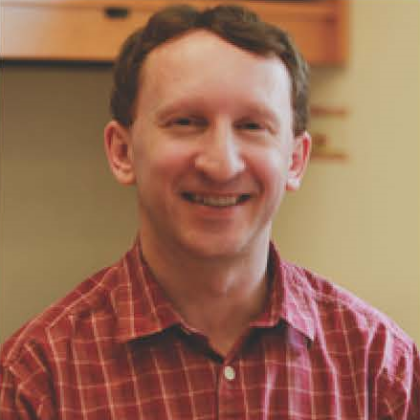Department of Biology Seminar Series: Benjamin Glick

Description
Benjamin Glick, a professor of molecular genetics and cell biology at the University of Chicago, will give a talk titled "Rethinking the Secretory Pathway" for the Department of Biology.
This is a hybrid event; please attend the event virtually by using the Zoom link.
Abstract:
Newly synthesized secretory proteins traverse the Golgi apparatus, which is a set of disk-shaped cisternae. According to the cisternal maturation model, Golgi cisternae form de novo, progressively mature while carrying the secretory cargoes forward, and ultimately disintegrate into secretory vesicles and other carriers. Golgi cisternae are commonly depicted as a series of compartments, but the molecular basis of this concept is ambiguous, and cisternal maturation further complicates the attempt to define Golgi compartments. As an alternative, we propose that the Golgi should be viewed as a set of maturing cisternae, with various membrane traffic pathways being switched on and off during the lifetime of each cisterna. Characterizing this system requires us to:
- Identify the membrane traffic pathways that operate at the Golgi
- Determine which components mediate each pathway
- Elucidate the regulatory system that controls the sequential activities of these pathways and choreographs Golgi maturation
To achieve these goals, we are using kinetic analysis to track Golgi maturation in the yeast Saccharomyces cerevisiae, which has optically resolvable non-stacked cisternae. This approach revealed that yeast cells lack distinct early endosomes and that endocytic vesicles fuse directly with the Golgi. It also revealed the existence of two intra-Golgi recycling pathways downstream of COPI-driven intra-Golgi recycling. Kinetic and functional data are now enabling us to assign vesicle tethers to individual traffic pathways. Meanwhile, our study of endocytic recycling indicates that multiple traffic pathways coordinate to ensure that endocytic vesicles fuse with a maturing cisterna during an appropriate time window. More generally, we believe that the Golgi can be understood as a dynamic system controlled by a molecular logic circuit composed of GTPase networks and interconnected traffic pathways. S. cerevisiae is ideally suited to mapping the functional connections between different parts of the Golgi system. Functional pathways and logic circuits are central concepts in many areas of cell biology, and we propose that these concepts are equally powerful for describing membrane traffic.
Who can attend?
- Faculty
- Staff
- Students







